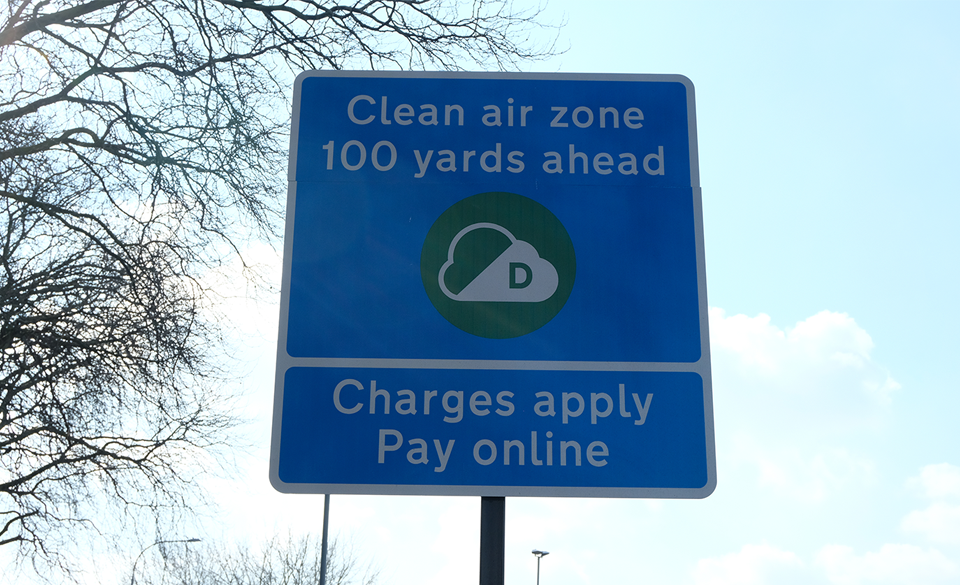In recent years, the government has introduced Clean Air Zones in parts of the UK, with the aim of reducing air pollution in cities - drivers of older vehicles that cause more pollution are charged for driving through these areas and if they don’t pay the fee, they are fined.

© Edwin Ellis CreativeMedia / Shutterstock
The onus is on the motorist to check whether they are in a Clean Air Zone, so it’s no defence to say you didn’t pay the charge because you hadn’t realised.
While the number of zones is relatively small at present, the government is planning to introduce more in the future.
What is a Clean Air Zone?
The rules of the zones are based on the European emission engine classification standards. Vehicles that comply with specific standards won’t be subject to any charges.
Petrol cars and vans must comply with the Euro 4 standard. Usually, vehicles registered from 2006 onwards meet these standards.
Diesel cars and vans must meet the Euro 6 standard. Vehicles registered from September 2015 onwards commonly meet this standard.
Buses, HGVs and coaches should be compliant with Euro VI. This standard is generally met by vehicles registered from January 2013.
Any non-compliant vehicles will be charged if they enter a Clean Air Zone. Daily charges, types of vehicles, exceptions and penalties differ between zones, so it pays to check the details beforehand.
Where are the zones currently?
The current road user charging zones have been introduced in various parts of the UK under Part III of the Transport Act 2000. They include the Low Emission Zone and Ultra Low Emission Zone in London, various Clean Air Zones across England and Low Emission Zones in parts of Scotland.
London’s Ultra Low Emissions Zone is a targeted area that is due to be expanded on 29th August.
ULEZ is London’s own separate scheme and is outside of the rest of the UK’s Clean Air Zone framework. However, it is based on the same idea of encouraging drivers of high polluting vehicles to switch away from them.
Clear Air Zones can comprise anything from a single road to any part of the city, or just the main city centre. Restrictions can vary, depending on the region’s legislation. Vehicles that comply with the Euro emission standards will normally be exempt from paying any charges.
There are a number of notable established zones in various cities in England.
Bristol Clean Air Zone
The Bristol Clean Air Zone was launched on 28th November 2022. All high-emission vehicles, including private cars, are charged to drive through the Class D zone in the city centre. Other vehicles that will be charged include pick-ups and some camper vans.
There will be no charge for modified vehicles registered through the Energy Saving Trust Clean Vehicle Retrofit Accreditation Scheme.
More than 71% of vehicles travelling through the Bristol CAZ meet emission levels and are not being charged, according to recent data.
Birmingham Clean Air Zone
The Birmingham Clean Air Zone was launched on 1st June 2021. This is also a Class D zone. Non-compliant vehicles will be charged between £8 and £50, depending on different factors.
Electric and hybrid vehicles won’t be charged a fee, nor will motorcycles. However, the diesel or petrol engines in the hybrid vehicles must meet certain criteria.
Clean Air Zone Sheffield
Sheffield is currently in the process of implementing a Clean Air Zone, plans for which were laid out earlier this year.
Its Class C zone means taxis, buses, vans and lorries will be charged. The fee will be £10 a day for taxis and light goods vehicles and £50 a day for buses, HGVs and coaches.
Bath Clean Air Zone
The Bath Clean Air Zone was launched on 15th March 2021. The Class C zone does not charge private cars and motorbikes to enter. However, coaches, buses, minibuses, vans, pickups, light goods vehicles, trucks and some camper vans are charged.
Where are Clean Air Zones going to be in the future?
Currently, the government is reviewing plans to introduce a Clean Air Zone in Manchester. The outcome has not been decided yet.
There are currently no zones in Wales after Cardiff City Council decided not to introduce one in the city in 2019. However, in April 2023, the council announced it was looking at the legislation again, due to growing concerns about air pollution, carbon emissions and the associated health risks.
There is currently no legislation in Northern Ireland that allows the government to charge road users.
Risk of incurring fines
Motorists who stray inadvertently into a Clean Air Zone and don’t pay will incur a fine - which is higher than the charges for legally passing through the zone.
No-one can pass through unnoticed, as local authorities will automatically collect vehicles’ registration numbers via automatic number plate recognition cameras. Details will be passed to the relevant authorities to rule whether the vehicle is liable for the charge.
The onus is always on the driver to know whether you’re in a Clean Air Zone or not. If you travel on a daily commute that passes through the zones, it can end up being costly.
If your vehicle doesn’t meet the emission standards, you can join the Clean Vehicle Retrofit Accreditation Scheme by having modifications carried out to your vehicle.
Alternatively, find out which area the CAZ covers and work out a new route using your sat nav system to avoid paying costs that might be difficult to afford in the current economic climate.

